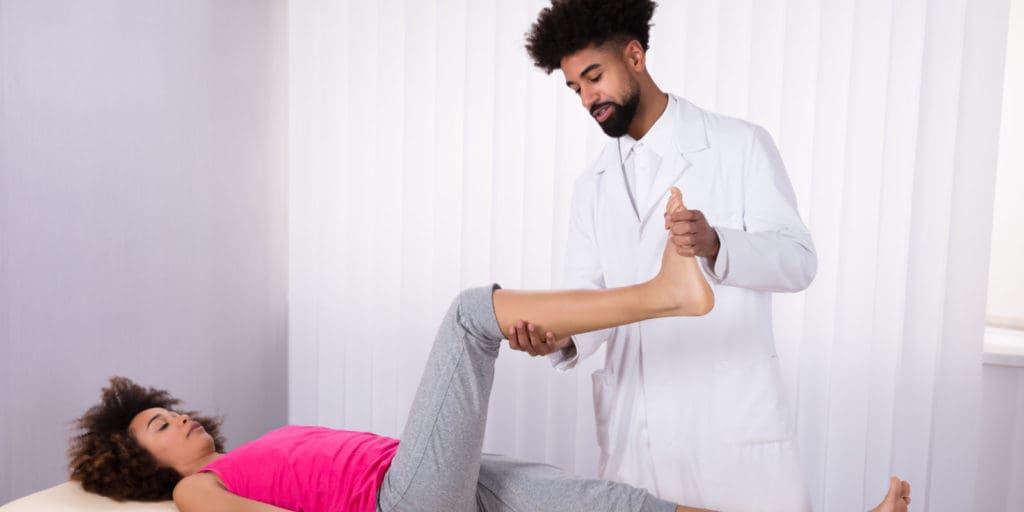Leg Pain Worse at Night Overview
In America, up to 60 percent of adults experience nocturnal leg cramps, with 20 percent of those adults seeking medical attention. If your leg pain is worse at night, cramps can be painful and unbearable at times, and finding applicable solutions is important for your well-being.
Leg cramps can vary from patient to patient, so awareness of your symptoms is key. Long-lasting leg cramps can be indicators of underlying chronic diseases, so seeking help may be your best option.
Leg Cramps At Night Can Cause Future Aliments
To reduce the risk of these symptoms, consult with your doctor to see if there are any therapies or treatments that work for you, including cognitive behavioral therapy, which is used to treat insomnia.
Leg Cramp Causes
Experts can’t always pinpoint nighttime leg cramp causes, but in recent studies they have been associated with:
- Overexerting your muscles
- Blood pressure, birth control and other medications
- Medical conditions, like pregnancy
- Medical treatments (e.g., chemotherapy)
- Sitting for long periods of time
- Not getting enough arch support in your shoes or standing on certain types of unsupportive floors for long periods of time
These types of nighttime leg cramps often subside quickly upon standing. However, persisting leg pain can be a sign of a serious medical issue.
Medical Conditions Mistaken For Leg Cramps
Below are some of the most common chronic conditions that may be causing your leg cramps at night.
Peripheral Artery Disease
Peripheral artery disease (PAD) occurs when plaque or fat builds up in your arteries, which reduces blood flow. This can happen in your stomach, arms and head, but it primarily affects the legs and feet. PAD can be caused by high blood pressure, high cholesterol, smoking, and obesity. Symptoms include:
- Leg pain while walking or using the stairs
- Weak pulse due to lack of blood flow (which results in paleness)
- Leg numbness or weakness
- Hair loss on legs
- Discoloration of your legs or other affected areas, which normally will appear as a bluish tint
- Slow-growing or thickened toenails
Severe cases can lead to amputation, a stroke, or a heart attack. So, figuring out how to reduce symptoms is imperative to the PAD community. Studies have proven that quitting smoking can greatly improve PAD symptoms and reduce rates of amputation.
Other treatments may include changing your diet to foods low in saturated fat and adding light exercise to your routine.
Varicose Veins
In normal veins, muscles move one-way valves in your veins to keep blood flowing back to your heart. In varicose veins, however, these valves don’t work properly, so blood can go the wrong way in your veins. This is not a dangerous thing in shallow veins, but when it occurs in deeper veins, it can be life-threatening.
Varicose veins can be associated with leg cramps, but there are other ways to tell that you may have them:
- Your veins can often look purple or dark blue
- You have a heavy feeling in your legs
- Veins look like they could burst, which increases the risk of bleeding
- Eczema, which is associated with itchy and dry patches of skin
The causes of varicose veins can be as straightforward as a weakened valve. If your valves are weak, it can cause the blood to flow the opposite way, since veins already have to pump blood against gravity.
Other risk factors are pregnancy, constipation, obesity, menopause, increasing age, and genetics. To prevent these symptoms you can:
- Exercise regularly
- Change to a high fiber diet
- Avoid solely standing or sitting for long periods of time
- Move around every 30 minutes
- Avoid footwear that does not offer good support
- Elevate your legs
Restless Leg Syndrome
A high percentage of patients with varicose veins often have restless leg syndrome (RLS), which is a condition that mainly occurs at night when your legs are resting. This syndrome has also been associated with fibromyalgia. Typical RLS is characterized by the restless movement of the legs, as the name implies.
While this condition is not linked to any life-threatening symptoms, it can interrupt sleeping patterns and affect your daily life. Symptoms include:
- Tingling
- Pins and needles
- Pulling or tugging feeling along your muscles
- Itching
- Burning and aching
There are many natural remedies for RLS that you can try at home. Some of these look like stretching before you go to sleep, relaxation techniques (taking a hot bath, yoga, etc.), exercising, and going to bed at a regular time.
Leg Pain Management and Treatment Options
While it’s hard to say that one treatment option will take your leg pain away, don’t lose hope. There are many options you can try for managing nighttime leg cramps.
Self-Treatment for Chronic Leg Pain
Self-treatment can look like many things, such as:
- Massaging and stretching your legs to relax the muscles
- Walking on your heels to increase blood flow
- Using heat for tight muscles
- Using cold packs for tender muscles
- Changing your diet
- Exercising lightly to keep blood flowing to and from your legs
Medical Treatment
Medical treatment is tricky when it comes to leg cramps. Modern medicine currently has no definitive solutions for leg cramps as a symptom, and only some chronic conditions can be treated. However, over-the-counter pain relievers can help with pain temporarily.
Talking to your doctor is the best thing you can do if at-home options don’t help and pain persists. You could have a more serious underlying issue if leg pain at night is affecting other areas of your life, such as impacting your work performance by disrupting sleep.
How do you alleviate leg pain worse at night issues?
